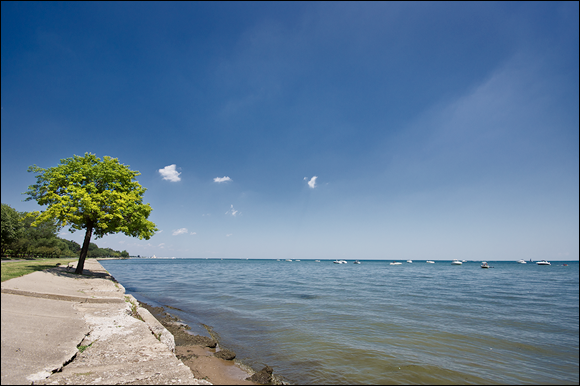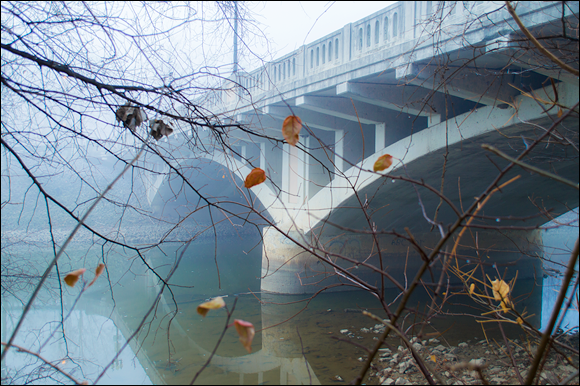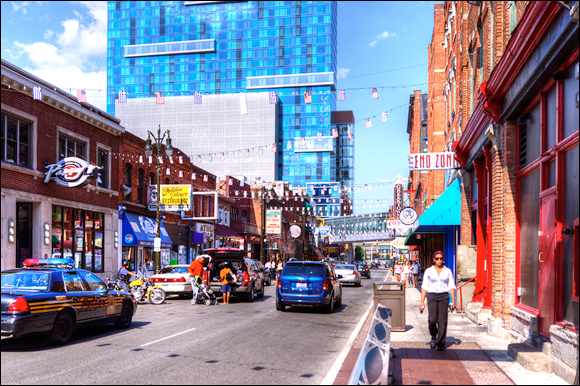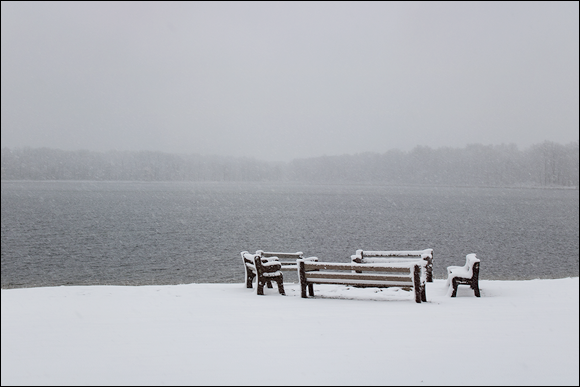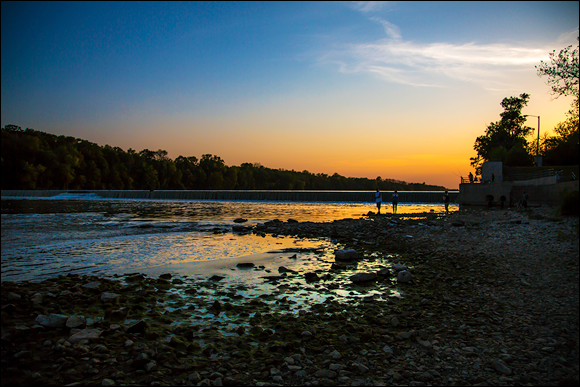Chapter 2
Landscapes
IN THIS CHAPTER
 Capturing a scene's breadth and depth
Capturing a scene's breadth and depth
 Shooting landscapes up close
Shooting landscapes up close
 Working in the city
Working in the city
 Taking advantage of the weather
Taking advantage of the weather
 Timing your shots for dramatic effect
Timing your shots for dramatic effect
When photographing landscapes, you have to go where the scenery is. That makes it fun and rewarding in a different way than other subjects. You’ll also have to deal with weather, sunlight, and other environmental factors that you have no control over. Despite sounding like a raw deal, it’s actually a great feeling when you are at the right place at the right time to capture a magnificent scene with your digital SLR.
My advice is to routinely take trips to all sorts of places, near and far. Shoot at different times, but especially during the golden hour (the hour after sunrise and before sunset when the light is very appealing). Mix things up. The photos I’ve chosen for this chapter do precisely that: I took them at different times of the year, at different hours of the day, in different weather, and with different cameras. Each one is unique, but they are all landscapes.
Using an Ultra Wide-Angle Lens
On the surface, there’s not much to the photo in Figure 2-1. However, I can’t take my eyes off it. My family and I were visiting Detroit on a photo excursion and had made it to the Grosse Pointe area. It was a hot and sunny afternoon. Having discovered the beauty of Lake St. Claire, I got the camera and tripod out and took some shots. This photo has got most of the ingredients for a classic landscape: tripod, remote, aperture at f/8.
My lens choice was critical for this scene. With so much to see, composing and framing landscapes is a critical skill to develop. The Rule of Thirds is important. While this is ostensibly a shot of the lake, rather than make it all about the lake, I included the tree on the left. It provides contrast to the blue expanse of water and sky.
I took this photo with a Sony APS-C dSLT in aperture-priority mode at 10mm, f/8, 1/320 second, and ISO 100.
Keys to this photo:
- The 10-20mm ultra wide-angle lens makes this shot expansive.
- I framed the scene using the Rule of Thirds.
- Shot using a tripod and remote.
- Classic f/8 landscape aperture delivers infinite depth of field.
Getting Up Early
The bridge shown in Figure 2-2 is about a half mile from where I live. I drive past it constantly, and for some time I struggled with how best to photograph it. At one point, I had planned to get out on a sunny morning and capture the sun reflecting off the water, which turns the bridge a nice gold color. The morning I took this photo, however, was foggy. Recognizing an opportunity, I grabbed the camera and went to the bridge to see what I could photograph.
While still a landscape, this shot has a completely different impact than the last shot. It’s almost the opposite: nearby instead of far away, creatively using the foreground, shrouded in mystery instead of well-lit, morning light instead of mid-day, almost normal focal length instead of ultra-wide, f/4 instead of f/8, and handheld instead of tripod. Yet it works!
I took this shot with a Nikon APS-C dSLR in aperture-priority mode at 24mm, f/4, 1/40 second, and ISO 110.
Keys to this photo:
- Intervening branches add complexity while fog removes details.
- Diffuse early morning light very different than during the day.
- Composed with the bridge at an angle.
- Focal length close to normal makes this an unusual shot.
Going Different Places
It’s possible to shoot “landscapes” in the city too. On the same trip to Detroit, we went downtown several times to see the sights. One afternoon we visited Greektown. The scene in Figure 2-3 is filled with the hustle and bustle of a district devoted to entertainment. As I looked at the scene through the viewfinder, I saw a woman walking toward me. The rest of the frame was so busy and yet anonymous. I knew that she would add something personal. I had to wait until she got close enough and then take the photo.
I took this shot with a Sony APS-C dSLT in aperture-priority mode at 22mm, f/8, 1/250 second, and ISO 100.
Keys to this photo:
- Timing and opportunity to photograph the woman walking toward me.
- Framed the street using the Rule of Thirds.
- Aperture provides great depth of field while shutter speed prevents blur.
- Wide angle makes the scene feel large.
Getting Out in the Weather
Figure 2-4 shows a winter scene that I photographed in late November on the shore of another lake. The day was cold and decidedly wintery. It snowed several inches and the wind was blowing forcefully. In a word: Perfect! I had not been up to this lake outside of the summer, so this was a perfect opportunity for fun and photography.
This looks like another classic wide-angle moment, but the fact is I zoomed in and used a normal focal length to make the circle of benches more prominent; more than they looked at 18mm.
I took this shot with a Canon APS-C dSLR in aperture-priority mode at 37mm, f/5, 1/200 second, and ISO 100.
Keys to this photo:
- Making the effort to be out in the cold and snow.
- Rule of Thirds divides the scene nicely into fore, mid, and background.
- Normal angle gives the benches greater importance.
- A study in low-contrast, virtually monochrome beauty.
Waiting for Sunset
Sunsets are another classic landscape ingredient. The challenge is being at the right location when they happen, and then having the patience to finish what you start. Don’t get caught up thinking the moment is over as the sun dips out of view. Sunsets are constantly changing. Take shots before, during, and after. You never know which photo will strike you as “the one.”
In the case of Figure 2-5, I was taking a 3-photo exposure bracket that I thought would make a good HDR image. The dark shot brought out the beauty of the sky and reflections on the water best. While the camera thought the scene needed more light, it was the perfect exposure for this photo.
I took this shot with a Canon full-frame dSLR in aperture-priority mode at 28mm, f/4, 1/2500 second, and ISO 100.
Keys to this photo:
- Creative decision to use a dark shot.
- Colorful sky combined with reflection on river contrasted with dark foreground and riverbanks.
- Full-frame quality with great lens at low ISO delivers details and smooth color gradients.
- Classic wide-angle focal length captures breadth of the river.
 Capturing a scene's breadth and depth
Capturing a scene's breadth and depth Shooting landscapes up close
Shooting landscapes up close Working in the city
Working in the city Taking advantage of the weather
Taking advantage of the weather Timing your shots for dramatic effect
Timing your shots for dramatic effect